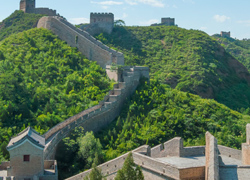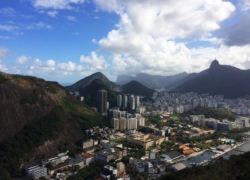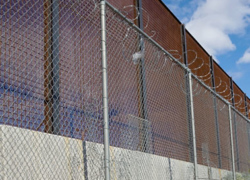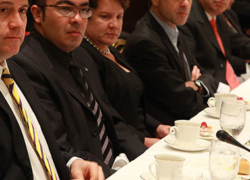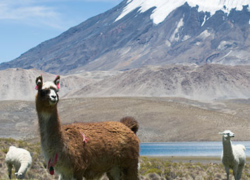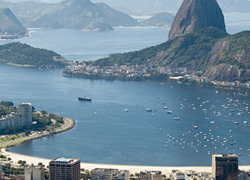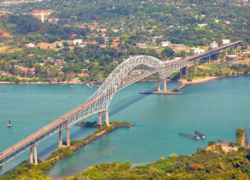Q: U.S. Trade Representative Ron Kirk announced this month that Canada and Mexico have joined Japan in expressing interest in participating in the Transpacific Trade Partnership (TPP), an investment and trade initiative that the Obama administration considers a "top priority" in its Asia-Pacific strategy. Is the TPP on track to complete a framework in 2012, as planned, or will the recent interest from Canada, Mexico and Japan delay the timetable? Are Mexico and Canada likely to join the TPP, and what changes would they bring?
A: Patrick Kilbride, senior director for the Americas at the U.S. Chamber of Commerce: "The Obama administration sees the TPP as a strategic U.S. foothold in pan-Asian markets. The broader potential of this agreement is to form a plurilateral leaders' group that will recatalyze global trade liberalization at the WTO. This is former U.S. Trade Representative Robert Zoellick's 'competitive trade liberalization' on a grand scale, and it's working: Witness the interest expressed by Canada, Mexico and Japan. The immediate priority should be to conclude the highest possible standard agreement with existing parties, but with an explicit invitation to additional countries to immediately join the agreement via a standard accession model. For Latin America, it's important to avoid an Asia-centric TPP. Vigorous participation from our hemisphere will help keep the center of gravity of global trade flows firmly over the Pacific. To that end, the United States should embrace Canada's and Mexico's participation, and prospectively Colombia, Panama and the CAFTA-DR. This is strategically important not just for the hemisphere, but also for the United States. Over 40 percent of U.S. exports currently go to hemispheric partners, and, through integrated supply and production chains, Mexico and Canada in particular are also an important export platform for the United States and a key to our global competitiveness. Former WTO Appellate Body Chairman James Bacchus recently suggested the TPP be 'married' to the WTO, with dispute settlement responsibilities, among other things, managed by Geneva. That's a lot to put on the TPP at this point in negotiations, but it is exactly the kind of visionary thinking that can make the TPP the trade policy gateway to the next era of global trade liberalization."
A: Todd Tucker, research director of Public Citizen's Global Trade Watch: "The more countries that join the TPP talks, the more complex the negotiations will inevitably become. Moreover, Canada and Mexico already have trade deals with the United States and Chile. The United States, for its part, already has trade deals in place with TPP partners Australia, Chile, Singapore and Peru. How the pre-existing deals will mesh with the regional deal is a major concern among negotiators. For instance, NAFTA allows more policy space for financial services regulations than subsequent U.S. deals. The TPP might erase some or all of that policy space for Canada and Mexico. The same type of concerns hold for Australia, whose trade deal with the United States excludes the controversial mechanism that allows corporations to directly challenge government regulations, and for Peru, whose U.S. trade pact has more flexible intellectual property provisions than those proposed for the TPP. Ideally, a 21st century trade agreement would incorporate the provisions of each deal that is best for consumers and the environment. Unfortunately, that does not seem to be the current trajectory."
A: Justin S. Miller, international trade analyst at White & Case LLP: "The recent announcement at the 19th Asia-Pacific Economic Cooperation (APEC) Summit in Hawaii that Mexico and Canada, in addition to Japan, will seek accession to the Trans-Pacific Partnership is certainly a boon for the agreement. The Obama administration places high hopes on it for boosting U.S. export volumes and reasserting U.S. presence in the Asia-Pacific region, including Latin America, where China has made significant trade- and investment-related in-roads over the past decade. While existing TPP members are eager to include Japan, Mexico and Canada as new export markets and/or further incorporate them into regional supply chains under supposedly more transparent TPP rules, it has been made clear to these potential new entrants that, upon accession, they must uphold the high standards of the agreement and accept the provisions that have already been negotiated. With several other factors working against an expeditious conclusion to TPP negotiations in 2012, such as stark differences among existing members on controversial texts (for example, state-owned enterprises, goods market access, investor-state dispute settlement and intellectual property rights), the insistence by a new entrant on narrowing the ambitious scope of the agreement or modifying previously negotiated texts would undoubtedly irk existing members and delay such a conclusion beyond 2012. Whether Mexico and Canada achieve accession to an unfinished TPP largely depends on how well they are able to convince existing members on the upside to their accessions and, also, on their intentions not to fundamentally modify the general scope and direction of current negotiations."
A: Jorge Heine, CIGI chair in Global Governance at the Balsillie School of International Affairs in Waterloo, Ontario, and a former Chilean cabinet minister and ambassador: "The TPP is the centerpiece of Washington's Asia-Pacific offensive. It counters China's plans for an East Asian Free Trade Area, formalizes U.S. presence in the fastest growing area in the world, and shows (finally) the semblance of an international trade policy from the Obama administration. The United States' steady loss of market share in Asia makes the TPP especially urgent for Washington, as it aims to increase exports and create jobs at home. The other eight countries that have signed on to the TPP, as well as newcomers like Canada, Japan and Mexico, will find themselves under considerable pressure from the Obama administration to finalize the agreement, which has already seen six negotiating rounds, before the November 2012 presidential election. Canada and Mexico, both keen to diversify their exports to Asia, are more likely to come on board than Japan. Though Japanese big business favors the TPP, Japanese farmers, a powerful voting bloc, do not. The TPP's biggest advantage, its all-encompassing, latest-generation nature that includes services, intellectual property, government procurement and regulatory issues, is also its biggest drawback, making its ratification contentious in most member countries. At this point, if Washington pulls all the stops to keep the TPP on track, a most likely outcome would be a TPP by late 2012 with the current nine signatories plus Canada and Mexico but sans Japan."
A: Richard Feinberg, professor of international political economy at the University of California at San Diego and former president of the Inter-American Dialogue: "The Trans-Pacific Partnership (TPP) has its origins in a Chilean initiative to bridge the Pacific by forming a free-trade area with the like-minded free-trade oriented nations of Singapore and New Zealand (the oil-wealthy economy of Brunei also joined). In the trade policy doldrums of recent years, USTR latched onto the TPP as a new business opportunity, and one which might provide a renewed impetus to the original APEC vision of regional economic integration. As the original APEC goal of regional free trade among its 21 members had begun to fade, the United States had tabled a 'Free Trade Area of the Asia-Pacific' or FTAAP, but it remains a vague aspiration still at the initial study stage. The U.S.-driven effort to enlarge the TPP has also been proceeding very slowly and the best the nine countries could do in Honolulu was to table a list of topics. The United States has loaded up the TPP agenda with its long list of ambitious 'behind the border' issues, including competition policy, regulatory convergence, serious intellectual property rights protection and labor and environmental norms, such that a wrap-up of the enlarged TPP talks by end-2012 is most unlikely. Adding three more negotiators-Mexico, Canada and Japan-further complicates the equation, especially in the critical agricultural sector, where the powerful Japanese grain producers have stymied more than one set of international trade talks. Countries join the TPP talks to be at the table, while the perceived costs are low because few insiders expect closure any time soon."
